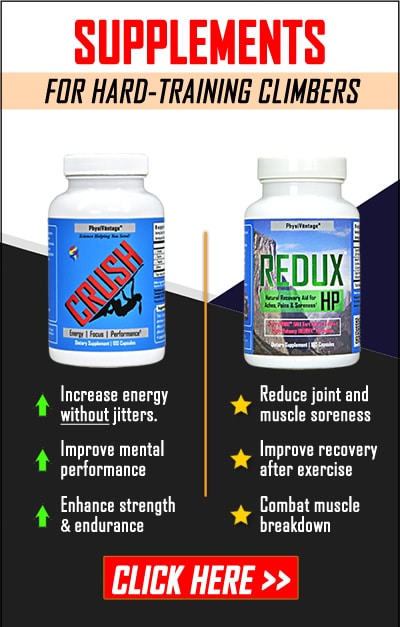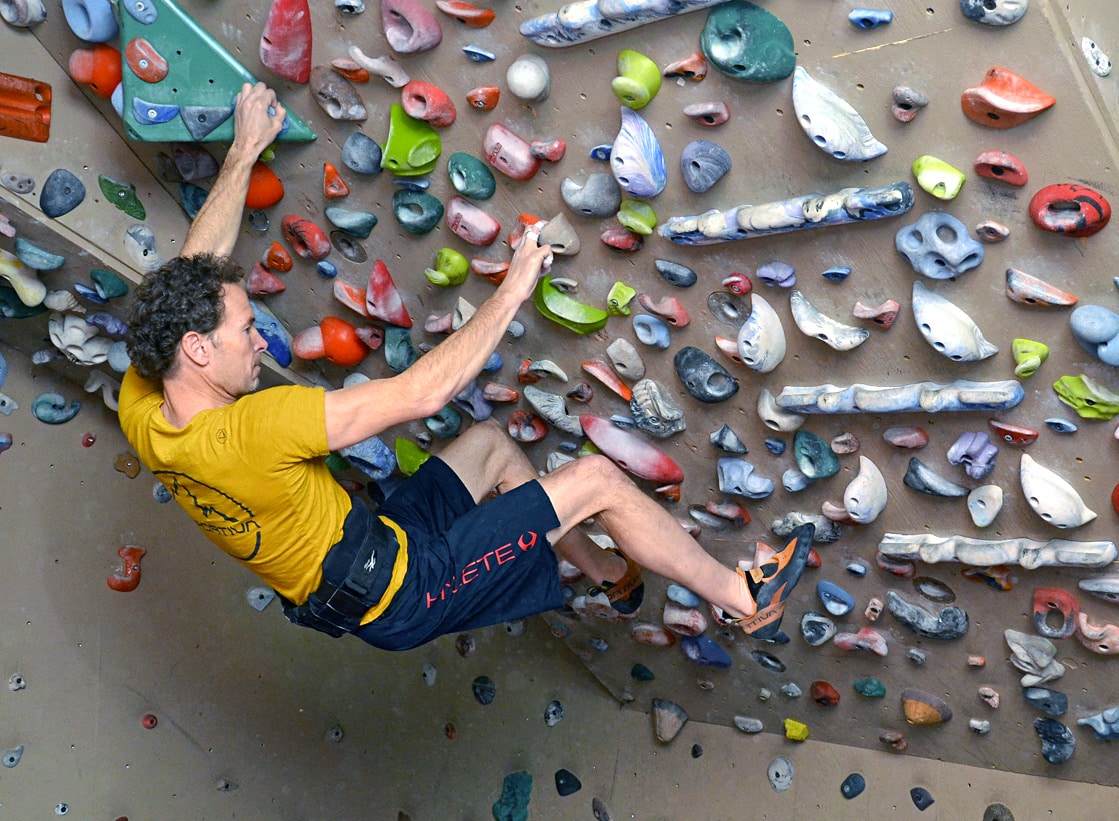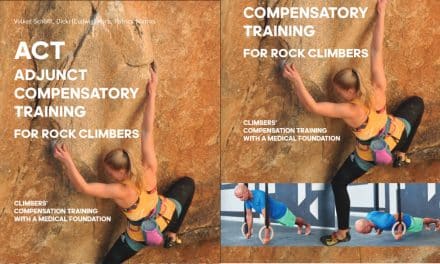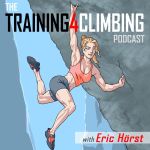Can’t make it to the gym? Bad weather at the crag? Sidelined with an injury? Try these tips for a cross-training workout that still makes you a better climber.
When it comes to improving as a climber, there’s no substitute for time on the wall. But what about when you find yourself out of routine and away from a climbing gym or crag? Work trips, family vacations, pesky injuries, burnout, bad weather, nightmare traffic… There are plenty of hurdles and unexpected surprises that can get in the way of the ideal training session you had in mind.
It happens. And when it does, don’t stress. Cross-training alone might not get you where you want to go in climbing, but it still factors into the equation. In most cases, something is better than nothing. Swapping out a climbing workout for an alternate form of physical activity can be a smart way to stay on track with training if Plan A falls through. Mixing things up might even help matters, especially if you’re due for a physical or mental reset.
But some things translate to climbing better than others. Stick with these options the next time you can’t climb, or just need a change of pace.
Strength Training
Climbing is mainly a skill sport. The more time you spend honing those skills, the more capable a climber you’ll be. But sheer strength comes in at a close second.
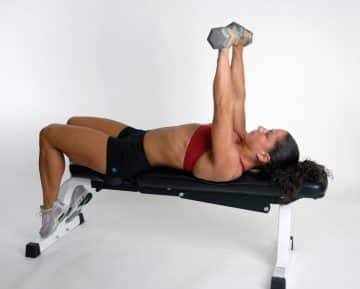
Balance out all the pulling involved in climbing with pushing motions, like the classic bench press.
Climbing works your muscles plenty hard through the very act of pulling yourself up the wall. Additional strength exercises then build on this base to make throwing your body around on the wall easier and more sustainable. For this reason, climbers should include some form of strength training in their routine, even when they are climbing regularly. Focusing on antagonist exercises (i.e. pushing motions) during these supplemental strength sessions can help balance out all the pulling involved in climbing. Pushups, bench presses, overhead presses, isometric holds, lat raises, tricep dips, and IYT’s all fall under this umbrella.
When strength training is the main event for the day during a cross-training sesh, you can sprinkle in more pushing motions here as well since you won’t be getting that stimulus from climbing. Simulate common climbing movements with weighted pull-ups, scapular pull-ups, rows, squats, step-ups, and leg raises to give your muscles a taste of the same activation.
Cardio Exercise
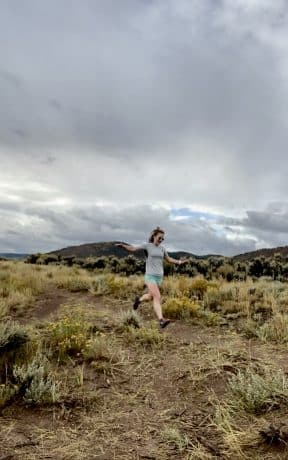
Give your heart some love and go for a run!
Give your heart some love and go for a run!While clipping bolts or topping out a boulder might not pull from the same bank of fitness as running a marathon, it’s still worth your time to get your blood pumping a bit. Cardiovascular fitness contributes to faster recovery between efforts, better stamina for long crag days, greater muscular endurance for repeated attempts on hard moves, and higher energy levels for pushing the limits of your abilities. The trouble often lies in managing the high energy output of cardio exercise alongside that of climbing.
That’s why cardio cross-training makes great sense on days off from climbing. Use your time away from the gym or crag to bolster your heart. Running, cycling, mountain biking, hiking, nordic skiing, rowing, and ellipticalling (yes, that’s a verb now) are all fair game. Opt for low-and-slow workouts to improve aerobic stamina (a.k.a. all day energy—think big wall objectives or high volume outings), or choose high-intensity sprint intervals for anaerobic muscular endurance (a.k.a. short bouts of maximum effort—think lots of quality tries on the crux of your project).
Mobility
If you’ve ever studied the beta of the best climbers in the biz, you’ve probably gawked at some of the trickery they’re able to pull off. Heel hooks above the head, high-steps at chest level, rose moves as wide as their wingspan…feats that seem impossible for the average human body to replicate. But these climbers have more than just genetics to thank for their acrobatic abilities. They also train with mobility in mind.
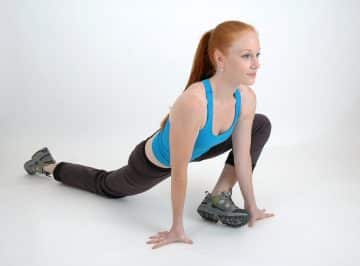
Mobilize your joints for a wider range of motion on the wall.
Mobility refers to the range of motion in your joints. It’s a combination of flexibility and strength. The more flexible you are, the more easily and intricately you can move your limbs. The more strength you have throughout that range of motion, the more you can actually use your limbs in such far-flung positions. Mobility essentially increases your options on the wall. If you can hike your toe all the way up to your armpit and successfully step up on it at that height, for example, you have more potential foot placements at your disposal than someone who can’t do so past their hip.
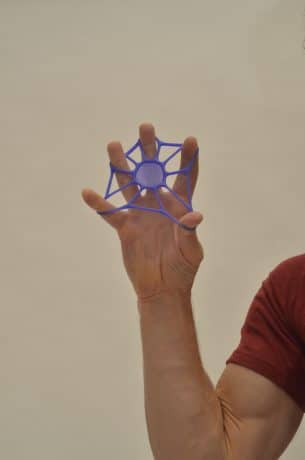
Finger extensions are an easy mobility exercise to build into your cross-training session between harder efforts.
Mobility is also important for injury prevention. When you’re able to engage the entire muscle from tip to tip, you can infuse that much more strength into your movements. This makes each move—no matter how precarious—more stable and fluid.
Hips, shoulders, wrists, and fingers deserve the most attention here. For hip mobility, include the froggy stretch, butterfly stretch, pigeon stretch, malasana squats, shin boxes, fire hydrants, or this comprehensive hip mobility routine from Lattice Climbing. For shoulders, go for wall angels or weighted floor angels, thoracic spine extensions, rotator cuff exercises, serratus foam rolls, or Lattice’s full shoulder mobility routine. Your wrists will appreciate the sun salutation wrist stretch, dynamic presses against a wall or floor, and forearm extensor rolls. Fingers love tendon glides and finger extensions—both of which are included in this simple daily protective finger training protocol.
Key Points:
- The best training for climbing happens on a wall—but there’s plenty of effective cross-training you can do in a regular gym or even at home when climbing isn’t in the cards.
- Strength training helps balance out the pulling motions of climbing as well as simulate common climbing movements.
- Cardio exercise aids in recovery, stamina, muscular endurance, and sustainable energy.
- Mobility exercises increase range of motion and prevent injury.
Related Articles:
- Will Running (and Other Cardio Exercise) Help Your Climbing?
- Effective Climbing Workouts Via the SAID Principle
- Aerobic Versus Anaerobic Training for Climbing
- Manage Fatigue and Accelerate Recovery
- 40 Ways to Improve Your Training and Climbing
Copyright © 2000–2023 Lucie Hanes & Eric J. Hörst | All Rights Reserved.


